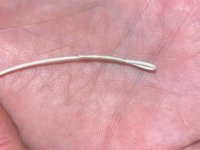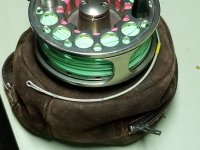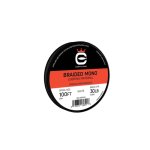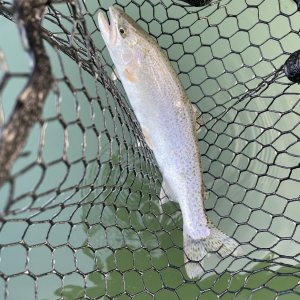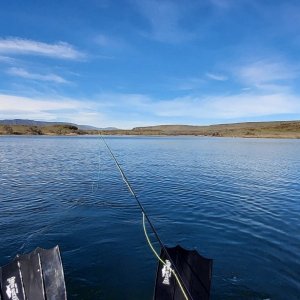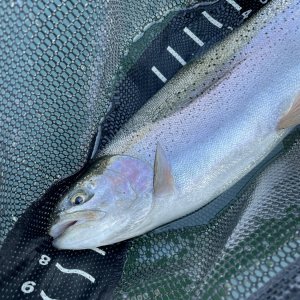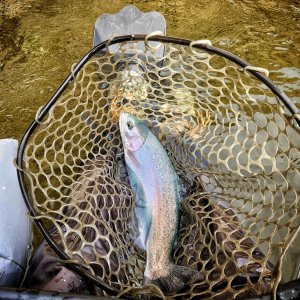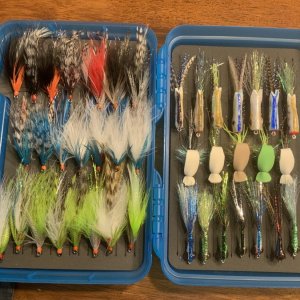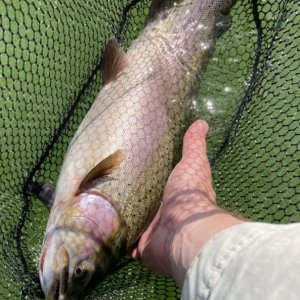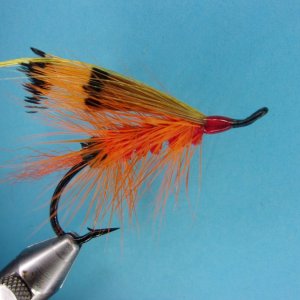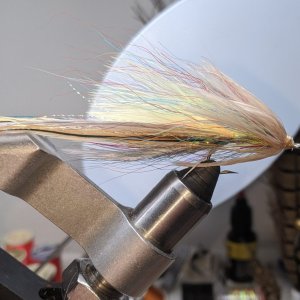Divad
Whitefish
Figured I’d share a step-by-step on how I whip up strong loops in various line materials. Works on fly line, polyleaders, versileaders, intermediate etc. This was taught to me by Bjorn at The Fly Fisher.
The most important material needed is 100d GSP (Gel Spun Poly) and a bobbin. Normal thread is not of adequate strength and will rot. 100d GSP is thin enough to bite into the line without severing it.
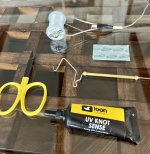
1.) Wrap the GSP a couple times around one of the legs of the bobbin. This is a crucial step and depending on your bobbin pressure may require more or less, but I suggest 1-3.
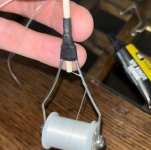
2.) Cut the end of whatever you’re looping at a 45 degree angle.
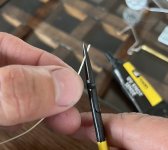
3.) Fold back about 1-1.5in making a loop, you can always cut some off during the process but you cannot add more.
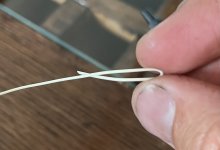
4.) Pull a few inches off the bobbin and lay it on the loop, pinching the GSP tag and loop.
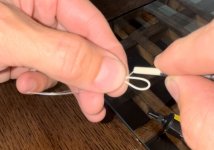
5.) Then wrap 2-3 times around the loop keeping tight pressure and pinch both the wraps and the excess GSP tag.

6.) Now the part where those bobbin wraps come in play. You’re going to pull a couple inches off your bobbin and let it dangle, still pinching the GSP tag and wraps with your finger. With your other hand you’ll pinch the loop right up next to the first couple wraps.
With your thumbnails acting as guides you’re going to swing the bobbin around the loop 5-6 times slowly rolling your thumbnail guide down the loop working towards the cut off bit of fly line.
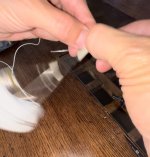
7.) Stop the swinging and pull tight on the bobbin pinching the wraps with your other hand to allow the thread to bite every 5-6 swung wraps.
7.5) Repeat steps 6 & 7 until you reach 3/4 of the way down the loop. Cut the GSP tag off.
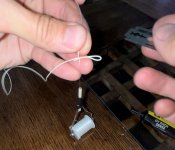
8.) Repeat steps 6 & 7 until you pass the cut end of fly line by 1/8-1/4in. It helps if you can form a ramp of thread at the fly line cut end. Then work back up the loop repeating steps 6 & 7. (Ignore the razor until the end of step 9.)
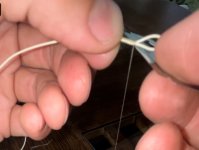
9.) Now whip finish (or half hitch, whip is much stronger for slippery GSP) and cut your thread short.
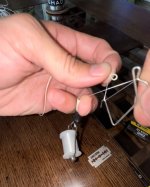
10.) Coat wraps with superglue (stiffer but stronger), UV Knot Sense (flexible, a little less strength) or AquaSeal (flexible, long cure).
The thread wraps do 90% of the job if done correctly, biting into the line. I’ve used this method without glue on stream-side repairs. The glue helps protect the thread and provide additional strength.
The most important material needed is 100d GSP (Gel Spun Poly) and a bobbin. Normal thread is not of adequate strength and will rot. 100d GSP is thin enough to bite into the line without severing it.

1.) Wrap the GSP a couple times around one of the legs of the bobbin. This is a crucial step and depending on your bobbin pressure may require more or less, but I suggest 1-3.

2.) Cut the end of whatever you’re looping at a 45 degree angle.

3.) Fold back about 1-1.5in making a loop, you can always cut some off during the process but you cannot add more.

4.) Pull a few inches off the bobbin and lay it on the loop, pinching the GSP tag and loop.

5.) Then wrap 2-3 times around the loop keeping tight pressure and pinch both the wraps and the excess GSP tag.

6.) Now the part where those bobbin wraps come in play. You’re going to pull a couple inches off your bobbin and let it dangle, still pinching the GSP tag and wraps with your finger. With your other hand you’ll pinch the loop right up next to the first couple wraps.
With your thumbnails acting as guides you’re going to swing the bobbin around the loop 5-6 times slowly rolling your thumbnail guide down the loop working towards the cut off bit of fly line.

7.) Stop the swinging and pull tight on the bobbin pinching the wraps with your other hand to allow the thread to bite every 5-6 swung wraps.
7.5) Repeat steps 6 & 7 until you reach 3/4 of the way down the loop. Cut the GSP tag off.

8.) Repeat steps 6 & 7 until you pass the cut end of fly line by 1/8-1/4in. It helps if you can form a ramp of thread at the fly line cut end. Then work back up the loop repeating steps 6 & 7. (Ignore the razor until the end of step 9.)

9.) Now whip finish (or half hitch, whip is much stronger for slippery GSP) and cut your thread short.

10.) Coat wraps with superglue (stiffer but stronger), UV Knot Sense (flexible, a little less strength) or AquaSeal (flexible, long cure).
The thread wraps do 90% of the job if done correctly, biting into the line. I’ve used this method without glue on stream-side repairs. The glue helps protect the thread and provide additional strength.
Last edited:

